LG 29.5 cu.ft. Smart French 4-Door, Door-In-Door Full Convert with Craft Ice Refrigerator in PrintProof Stainless Steel
Makes slow melting round Craft Ice, crushed ice & standard cubes. Full-Convert drawer has 5 temperature settings for flexibility. Smart Home & Wi-Fi enabled to control & monitor with phone app.
LG’s exclusive Door-in-Door refrigerators have everything you need to become the ultimate home entertainer. Dual ice makers with Craft Ice automatically create crushed, cubed and LG’s exclusive slow-melting round ice for upscale, craft drinks at home-without the work. The Full-Convert drawer gives you more capacity when you need it, with the ability to fully convert from 5 chill to freeze options with one quick touch. To ensure you’re serving guests the freshest foods, innovative LG cooling technologies work together to dramatically extend the life of your produce.
- Get more space for groceries in a great feature-packed refrigerator. Nothing beats the convenience of having more food when you need it, and with a generous 23 cu. ft. of space, you’ll have room and room to grow
- Enjoy a built-in look with the counter depth feature on this LG refrigerator. Thanks to its slightly shallower depth, it can stand flush with your counter top for a sleek look
- Bringing innovation and distinctive design together, LG’s new refrigerator with InstaView Door-in-Door will enhance even the most beautifully crafted kitchen. The sleek tinted glass panel illuminates with two quick knocks, allowing you to see inside the easy access compartment without ever opening the door, reducing cold air loss to help keep food fresher longer
- Flexible drawer gives you more capacity when you need it, with the ability to fully convert from fridge to freezer with one quick touch. Choose from five temperature settings to fit your family’s needs. Create instant space for that oversize ice cream birthday cake using the Freeze setting. Or prep for holiday gatherings with Chilled Wine, Deli Snacks, Meats or Cold Drinks options. Adjustable dividers keep everything neat and organized
- From pitchers to pint glasses, this external filtered ice and water dispenser can accommodate just about any container; The water and ice dispenser in this LG refrigerator is one of the tallest around, measuring in at an ultra-accommodating 12.6 in. The convenient Measured Fill feature lets you select the exact amount of filtered water in ounces (4,8,16, or 32), Plus, the brushed metal finish touch display includes the easy-to-operate temperature controls and refrigerator options
- Dual ice makers, dispensed from the door and located in the freezer compartment, automatically produce ice so you never run out. Creates standard ice cubes, crushed ice and LG’s exclusive round Craft Ice – crafted to melt slower, chill more efficiently, and help beverages taste their best for longer. From craft cocktails and whiskey to soft drinks, lemonade, even iced coffee, give your beverages the perfect ice
- This refrigerator features LG’s new pharmaceutical water filter, NSF certified to reduce more contaminants than our previous filters, for freshness you can taste
- Ice makers are great, but not if it means you can’t fit all of your food in the fridge. The Slim SpacePlus Ice System provides the most shelf space and allows even more space for door bin
- Located in the top of the fresh food section, the Door Cooling + vent extends the reach of LG’s Smart Cooling system. Blasts of cool air reach all areas of the refrigerator, including the door to help maintain consistent temperatures from top to bottom. It helps keep all foods fresh and flavorful and keeps produce fresh up to 2x longer
- You go all out when it comes to choosing fresh foods for your family LG Linear Cooling helps you keep them that way. The Linear Compressor reacts quickly to maintain temperatures within 1°F of the setting, to keep produce fresher up to 2x longer and helps preserve all foods fresh and flavorful
- Working hand-in-hand with the LG Linear Compressor, the Smart Cooling system uses digital sensors to detect and respond to even the smallest temperature fluctuations to help maintain peak food freshness, including keeping produce fresher upto 2x longer, The array of strategically-placed vents surrounds your food with cool air no matter where you put it
- Now you can have all of the things you love about stainless, without the need for special cleaners or constant attention. LG’s PrintProof fingerprint and smudge resistant finish easily wipes clean with a soft, dry cloth for a distinctive kitchen that handles real-life in style
- CoolGuard metal interior panel wall helps maintain cold air while adding a premium look
- Door-in-Door with ColdSaver Panel acts like a barrier keeping cold air in where it matters most – in the inside – giving you peace of mind that food will stay fresh longer. It reduces cold air loss to help keep food fresher longer
- Your food isn’t the only thing that stays fresh. Only LG offers a 1 layer Fresh Air Filter with dedicated fan that pushes cleaner, fresher air into the fridge
- Smart Pull Handle makes opening and closing the freezer quick and easy. All it takes is a simple lift of the handle for effortless access to your freezer
- From making extra ice for tonight’s dinner party while you’re at work to adjusting temperatures with simple voice commands, LG refrigerators with ThinQ technology will change the way you think, and the way you live. Simply download the free ThinQ app to your Android or iOS device and let the possibilities unfold. Receive notifications on your smartphone when the door is open or your water filter needs to be replaced. Control refrigerator and freezer temperatures remotely. Diagnose issues and get quick, expert advice. Or, use the voice-activated features of Google Assistant or Amazon Alexa. LG makes it easy to keep your cool in any situation. Let the advantages of smart technology work for you
- ENERGY STAR qualified LG refrigerator exceeds federal energy standards to positively impact your energy bill, your energy consumption, and most importantly, the environment
Additional information
| Depth (Excluding Handles) | 35.75 in |
|---|---|
| Depth (Including Handles) | 38.1 in |
| Depth (Less Door) | 31 in |
| Depth With Door Open 90 Degrees (In) | 50 |
| Height to Top of Door Hinge (in.) | 70.25 |
| Height to Top of Refrigerator (in.) | 69 |
| Product Depth x Height x Width (in.) | 38.1 x 70.25 x 35.75 |
| Refrigerator Width (In.) | 35.75 |
| Certifications and Listings | Energy Star |
| Manufacturer Warranty | Limited Warranty: 1 Year Parts & Labor, 5 Year Sealed System (Parts & Labor), 5 Years Compressor (Parts & Labor), 6-10 Years Linear Compressor (Parts Only) |
29 may refer to:
- 29 (number), the natural number following 28 and preceding 30
- one of the years 29 BC, AD 29, 1929, 2029
4 (four) is a number, numeral and digit. It is the natural number following 3 and preceding 5. It is a square number, the smallest semiprime and composite number, and is considered unlucky in many East Asian cultures.
5 (five) is a number, numeral and digit. It is the natural number, and cardinal number, following 4 and preceding 6, and is a prime number.
Humans, and many other animals, have 5 digits on their limbs.
A craft or trade is a pastime or an occupation that requires particular skills and knowledge of skilled work. In a historical sense, particularly the Middle Ages and earlier, the term is usually applied to people occupied in small scale production of goods, or their maintenance, for example by tinkers. The traditional term craftsman is nowadays often replaced by artisan and by craftsperson.
Historically, the more specialized crafts with high-value products tended to concentrate in urban centers and their practitioners formed guilds. The skill required by their professions and the need to be permanently involved in the exchange of goods often demanded a higher level of education, and craftspeople were usually in a more privileged position than the peasantry in societal hierarchy. The households of artisans were not as self-sufficient as those of people engaged in agricultural work, and therefore had to rely on the exchange of goods. Some crafts, especially in areas such as pottery, woodworking, and various stages of textile production, could be practiced on a part-time basis by those also working in agriculture, and often formed part of village life.
When an apprentice finished their apprenticeship, they became a journeyman searching for a place to set up their own shop and make a living. After setting up their own shop, they could then call themselves a master of their craft.
This stepwise approach to mastery of a craft, which includes the attainment of some education and skill, has survived in some countries to the present day. But crafts have undergone deep structural changes since and during the era of the Industrial Revolution. The mass production of goods by large-scale industry has limited crafts to market segments in which industry's modes of functioning or its mass-produced goods do not satisfy the preferences of potential buyers. As an outcome of these changes, craftspeople today increasingly make use of semi-finished components or materials and adapt these to their customers' requirements or demands. Thus, they participate in a certain division of labour between industry and craft.
A door is a hinged or otherwise movable barrier that allows ingress (entry) into and egress (exit) from an enclosure. The created opening in the wall is a doorway or portal. A door's essential and primary purpose is to provide security by controlling access to the doorway (portal). Conventionally, it is a panel that fits into the doorway of a building, room, or vehicle. Doors are generally made of a material suited to the door's task. They are commonly attached by hinges, but can move by other means, such as slides or counterbalancing.
The door may be able to move in various ways (at angles away from the doorway/portal, by sliding on a plane parallel to the frame, by folding in angles on a parallel plane, or by spinning along an axis at the center of the frame) to allow or prevent ingress or egress. In most cases, a door's interior matches its exterior side. But in other cases (e.g., a vehicle door) the two sides are radically different.
Many doors incorporate locking mechanisms to ensure that only some people can open them (such as with a key). Doors may have devices such as knockers or doorbells by which people outside announce their presence. Apart from providing access into and out of a space, doors may have the secondary functions of ensuring privacy by preventing unwanted attention from outsiders, of separating areas with different functions, of allowing light to pass into and out of a space, of controlling ventilation or air drafts so that interiors may be more effectively heated or cooled, of dampening noise, and of blocking the spread of fire.
Doors can have aesthetic, symbolic, ritualistic purposes. Receiving the key to a door can signify a change in status from outsider to insider. Doors and doorways frequently appear in literature and the arts with metaphorical or allegorical import as a portent of change.
French may refer to:
- Something of, from, or related to France
- French language, which originated in France
- French people, a nation and ethnic group
- French cuisine, cooking traditions and practices
Full may refer to:
- People with the surname Full, including:
- Mr. Full (given name unknown), acting Governor of German Cameroon, 1913 to 1914
- A property in the mathematical field of topology; see Full set
- A property of functors in the mathematical field of category theory; see Full and faithful functors
- Satiety, the absence of hunger
- A standard bed size, see Bed
- Fulling, also known as tucking or walking ("waulking" in Scotland), term for a step in woollen clothmaking (verb: to full)
- Full-Reuenthal, a municipality in the district of Zurzach in the canton of Aargau in Switzerland
Ice is water that is frozen into a solid state, typically forming at or below temperatures of 0 °C, 32 °F, or 273.15 K. It occurs naturally on Earth, on other planets, in Oort cloud objects, and as interstellar ice. As a naturally occurring crystalline inorganic solid with an ordered structure, ice is considered to be a mineral. Depending on the presence of impurities such as particles of soil or bubbles of air, it can appear transparent or a more or less opaque bluish-white color.
Virtually all of the ice on Earth is of a hexagonal crystalline structure denoted as ice Ih (spoken as "ice one h"). Depending on temperature and pressure, at least nineteen phases (packing geometries) can exist. The most common phase transition to ice Ih occurs when liquid water is cooled below 0 °C (273.15 K, 32 °F) at standard atmospheric pressure. When water is cooled rapidly (quenching), up to three types of amorphous ice can form. Interstellar ice is overwhelmingly low-density amorphous ice (LDA), which likely makes LDA ice the most abundant type in the universe. When cooled slowly, correlated proton tunneling occurs below −253.15 °C (20 K, −423.67 °F) giving rise to macroscopic quantum phenomena.
Ice is abundant on the Earth's surface, particularly in the polar regions and above the snow line, where it can aggregate from snow to form glaciers and ice sheets. As snowflakes and hail, ice is a common form of precipitation, and it may also be deposited directly by water vapor as frost. The transition from ice to water is melting and from ice directly to water vapor is sublimation. These processes plays a key role in Earth's water cycle and climate. In the recent decades, ice volume on Earth has been decreasing due to climate change. The largest declines have occurred in the Arctic and in the mountains located outside of the polar regions. The loss of grounded ice (as opposed to floating sea ice) is the primary contributor to sea level rise.
Humans have been using ice for various purposes for thousands of years. Some historic structures designed to hold ice to provide cooling are over 2,000 years old. Before the invention of refrigeration technology, the only way to safely store food without modifying it through preservatives was to use ice. Sufficiently solid surface ice makes waterways accessible to land transport during winter, and dedicated ice roads may be maintained. Ice also plays a major role in winter sports.
LG Corporation (or LG Group), formerly known as Lucky-Goldstar, is a South Korean multinational conglomerate founded by Koo In-hwoi and managed by successive generations of his family. It is the fourth-largest chaebol (family-run conglomerate) in South Korea. Its headquarters are in the LG Twin Towers building in Yeouido-dong, Yeongdeungpo District, Seoul. LG makes electronics, chemicals, household appliances, and telecommunications products and operates subsidiaries such as LG Electronics, Zenith, LG Display, LG Uplus, LG Innotek, LG Chem, and LG Energy Solution in over 80 countries. According to the “Top 500 Global Brands” released by British consulting firm Brand finance, LG's brand value ranking rose from 90th to 83rd from the previous year.
A refrigerator, commonly fridge, is a commercial and home appliance consisting of a thermally insulated compartment and a heat pump (mechanical, electronic or chemical) that transfers heat from its inside to its external environment so that its inside is cooled to a temperature below the room temperature. Refrigeration is an essential food storage technique around the world. The low temperature reduces the reproduction rate of bacteria, so the refrigerator lowers the rate of spoilage. A refrigerator maintains a temperature a few degrees above the freezing point of water. The optimal temperature range for perishable food storage is 3 to 5 °C (37 to 41 °F). A freezer is a specialized refrigerator, or portion of a refrigerator, that maintains its contents’ temperature below the freezing point of water. The refrigerator replaced the icebox, which had been a common household appliance for almost a century and a half. The United States Food and Drug Administration recommends that the refrigerator be kept at or below 4 °C (40 °F) and that the freezer be regulated at −18 °C (0 °F).
The first cooling systems for food involved ice. Artificial refrigeration began in the mid-1750s, and developed in the early 1800s. In 1834, the first working vapor-compression refrigeration, using the same technology seen in air conditioners, system was built. The first commercial ice-making machine was invented in 1854. In 1913, refrigerators for home use were invented. In 1923 Frigidaire introduced the first self-contained unit. The introduction of Freon in the 1920s expanded the refrigerator market during the 1930s. Home freezers as separate compartments (larger than necessary just for ice cubes) were introduced in 1940. Frozen foods, previously a luxury item, became commonplace.
Freezer units are used in households as well as in industry and commerce. Commercial refrigerator and freezer units were in use for almost 40 years prior to the common home models. The freezer-over-refrigerator style had been the basic style since the 1940s, until modern, side-by-side refrigerators broke the trend. A vapor compression cycle is used in most household refrigerators, refrigerator–freezers and freezers. Newer refrigerators may include automatic defrosting, chilled water, and ice from a dispenser in the door.
Domestic refrigerators and freezers for food storage are made in a range of sizes. Among the smallest are Peltier-type refrigerators designed to chill beverages. A large domestic refrigerator stands as tall as a person and may be about one metre (3 ft 3 in) wide with a capacity of 0.6 m3 (21 cu ft). Refrigerators and freezers may be free standing, or built into a kitchen. The refrigerator allows the modern household to keep food fresh for longer than before. Freezers allow people to buy perishable food in bulk and eat it at leisure, and make bulk purchases.
Smart may refer to a high level of intelligence or "street smarts".
"Smart" or SMART may also refer to the following.
Stainless may refer to:
- Cleanliness, or the quality of being clean
- Stainless steel, a corrosion-resistant metal alloy
- Stainless Games, a British video game developer
- Stainless Broadcasting Company, a TV broadcaster based in Michigan, US
- Stainless Banner, the second national flag of the Confederate States of America
Steel is an alloy of iron and carbon with improved strength and fracture resistance compared to other forms of iron. Because of its high tensile strength and low cost, steel is one of the most commonly manufactured materials in the world. Steel is used in buildings, as concrete reinforcing rods, in bridges, infrastructure, tools, ships, trains, cars, bicycles, machines, electrical appliances, furniture, and weapons.
Iron is always the main element in steel, but many other elements may be present or added. Stainless steels, which are resistant to corrosion and oxidation, typically need an additional 11% chromium.
Iron is the base metal of steel. Depending on the temperature, it can take two crystalline forms (allotropic forms): body-centred cubic and face-centred cubic. The interaction of the allotropes of iron with the alloying elements, primarily carbon, gives steel and cast iron their range of unique properties. In pure iron, the crystal structure has relatively little resistance to the iron atoms slipping past one another, and so pure iron is quite ductile, or soft and easily formed. In steel, small amounts of carbon, other elements, and inclusions within the iron act as hardening agents that prevent the movement of dislocations.
The carbon in typical steel alloys may contribute up to 2.14% of its weight. Varying the amount of carbon and many other alloying elements, as well as controlling their chemical and physical makeup in the final steel (either as solute elements, or as precipitated phases), impedes the movement of the dislocations that make pure iron ductile, and thus controls and enhances its qualities. These qualities include the hardness, quenching behaviour, need for annealing, tempering behaviour, yield strength, and tensile strength of the resulting steel. The increase in steel's strength compared to pure iron is possible only by reducing iron's ductility.
Steel was produced in bloomery furnaces for thousands of years, but its large-scale, industrial use began only after more efficient production methods were devised in the 17th century, with the introduction of the blast furnace and production of crucible steel. This was followed by the Bessemer process in England in the mid-19th century, and then by the open-hearth furnace. With the invention of the Bessemer process, a new era of mass-produced steel began. Mild steel replaced wrought iron. The German states were the major steel producers in Europe in the 19th century. American steel production was centred in Pittsburgh, Bethlehem, Pennsylvania, and Cleveland until the late 20th century. Currently, world steel production is centered in China, which produced 54% of the world's steel in 2023.
Further refinements in the process, such as basic oxygen steelmaking (BOS), largely replaced earlier methods by further lowering the cost of production and increasing the quality of the final product. Today more than 1.6 billion tons of steel is produced annually. Modern steel is generally identified by various grades defined by assorted standards organizations. The modern steel industry is one of the largest manufacturing industries in the world, but also one of the most energy and greenhouse gas emission intense industries, contributing 8% of global emissions. However, steel is also very reusable: it is one of the world's most-recycled materials, with a recycling rate of over 60% globally.
With or WITH may refer to:
- With, a preposition in English
- Carl Johannes With (1877–1923), Danish doctor and arachnologist
- With (character), a character in D. N. Angel
- With (novel), a novel by Donald Harrington
- With (album), a 2014 album by TVXQ
- With (EP), a 2021 EP by Nam Woo-hyun

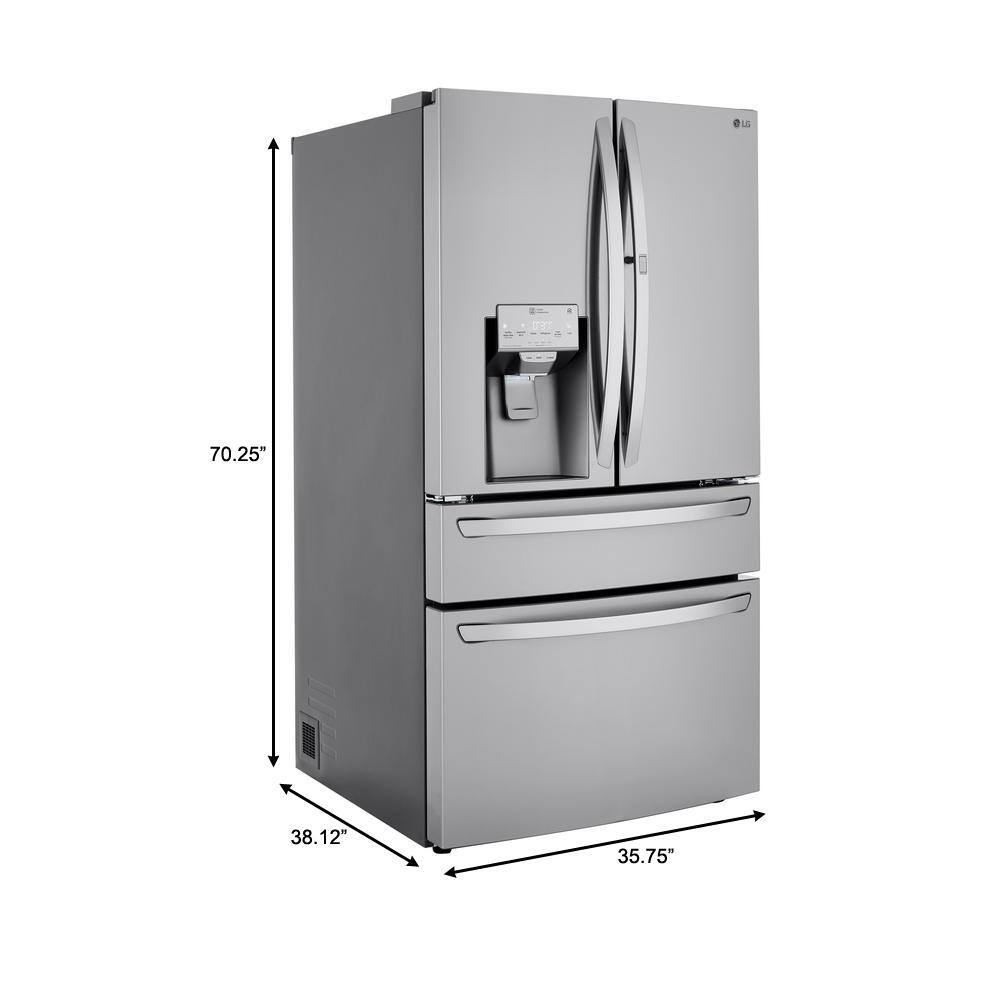
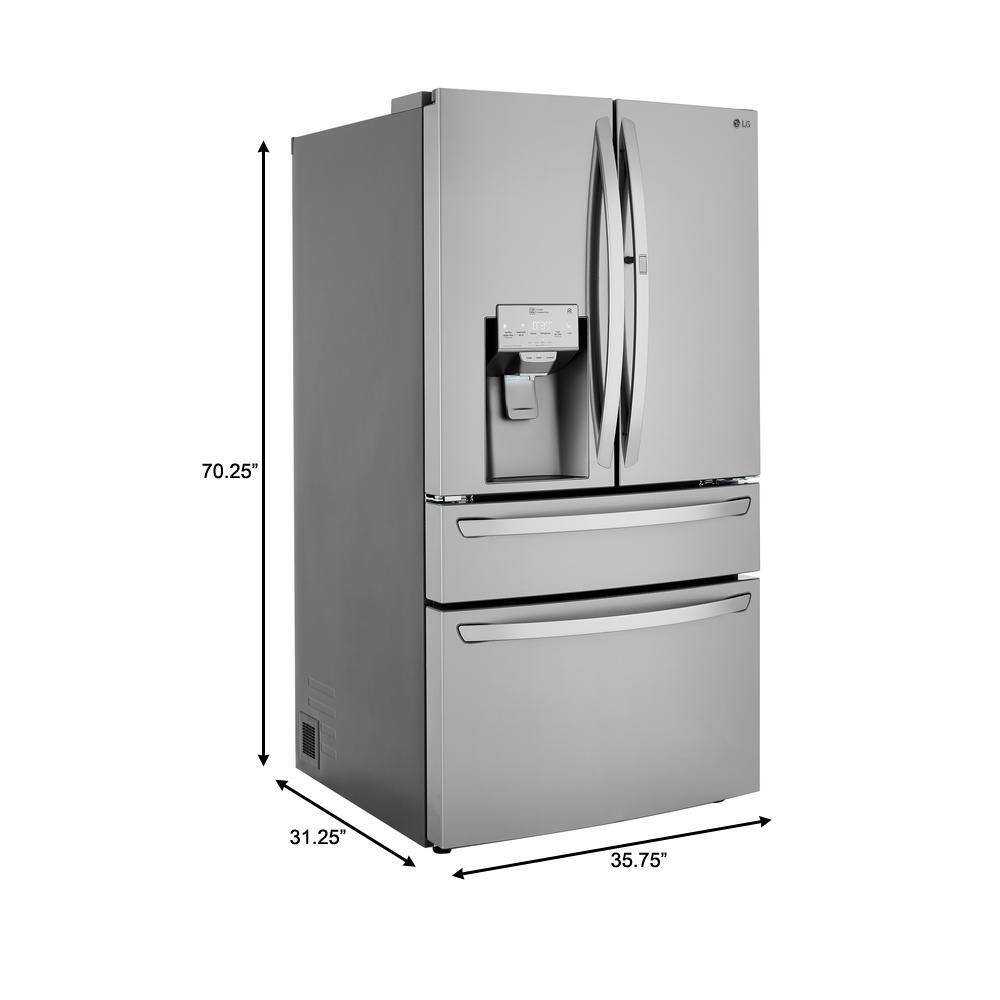
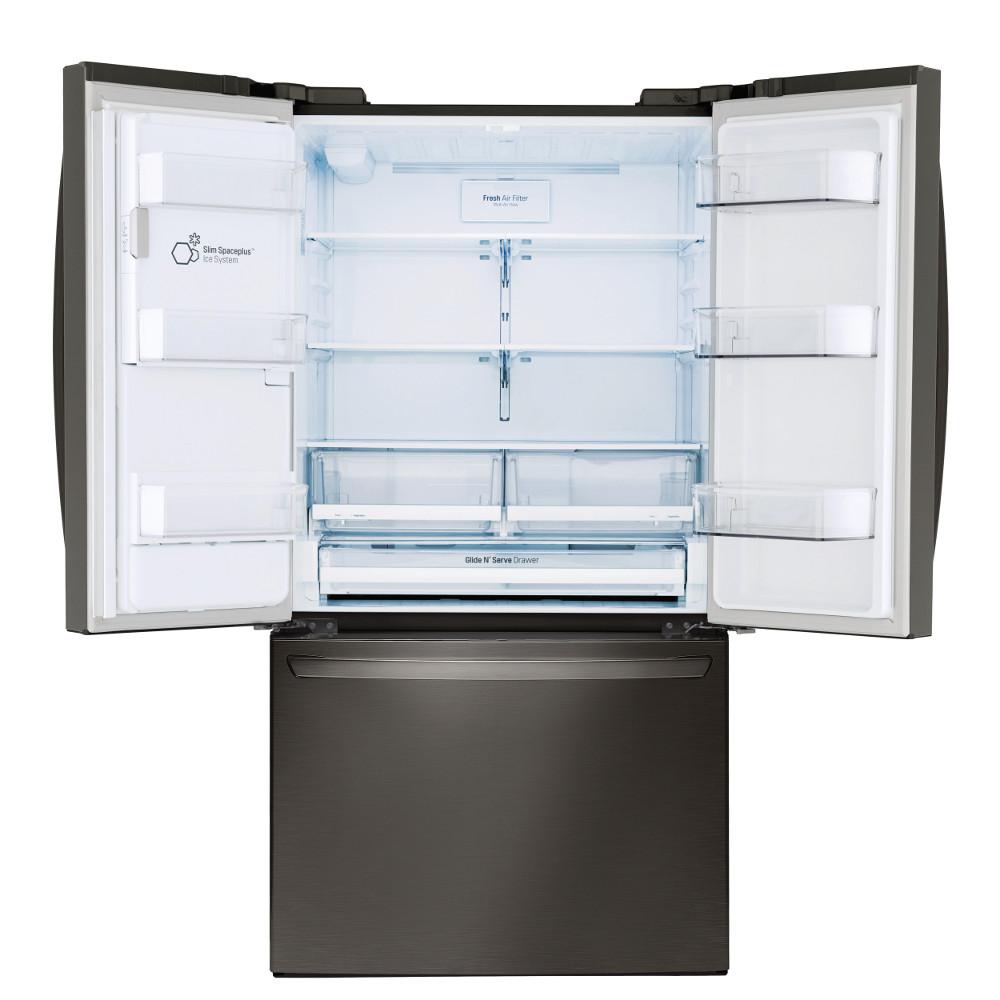
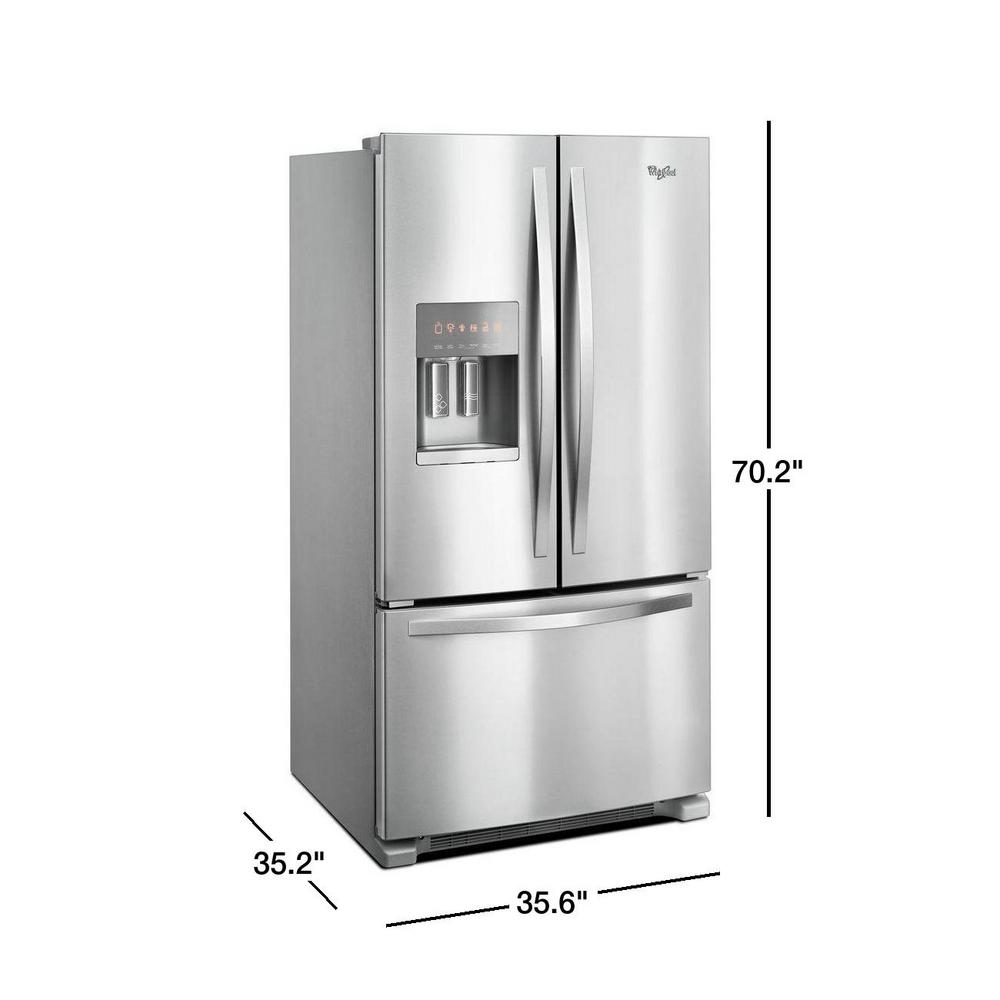
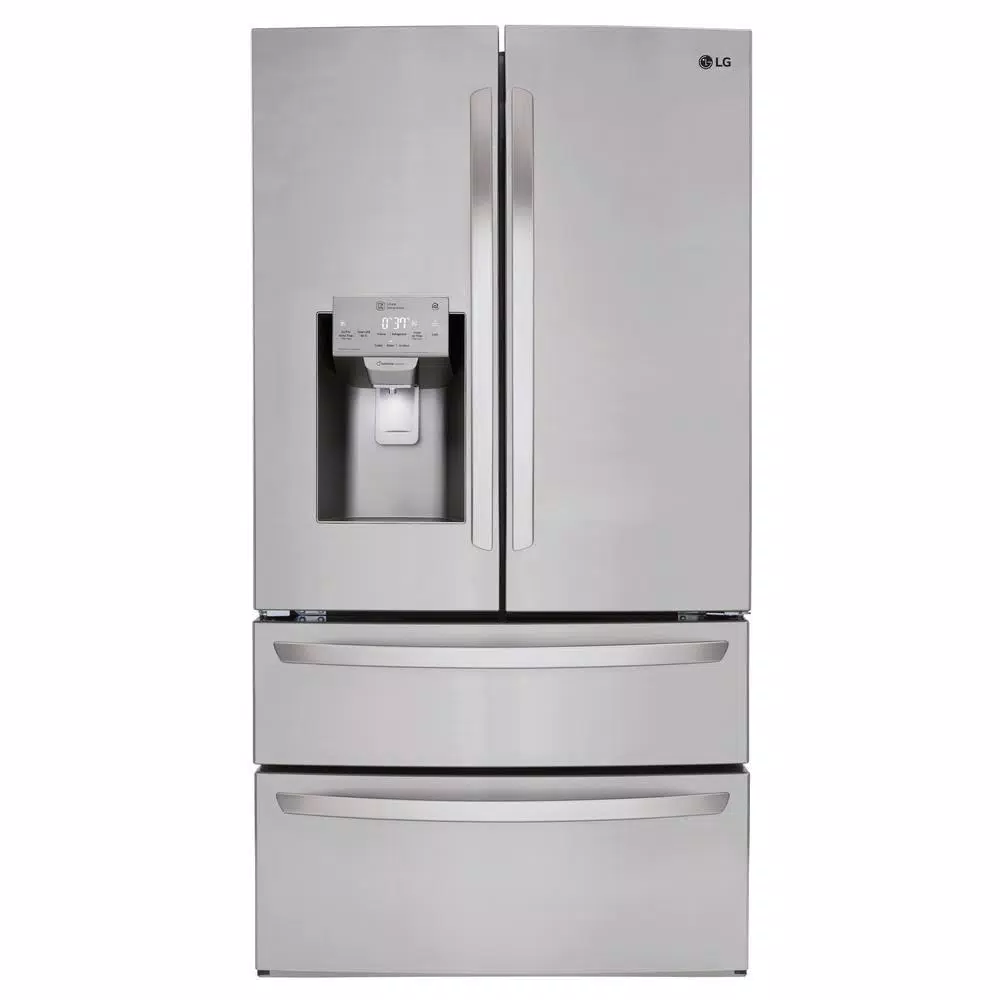
by Matt
So far so good. Fridge looks very nice. Love the craft ice. The interior seems a lot bigger than our old french door style fridge even though the dimension are almost identical.
by Andy
This is a great refrigerator. Spacious, love the cocktail ice and the ice and water dispenser is easy and reliable.
by Carol
Love everything about this refrigerator. So much room and I especially like the lighting.
by Cathy
great refrigerator. love the option from refrigerator to freezer on the pullout drawer and the artisan ice is fantastic